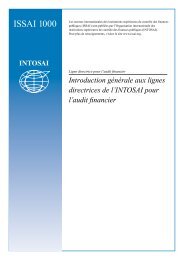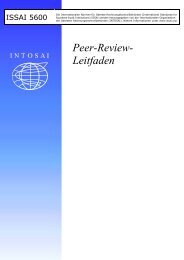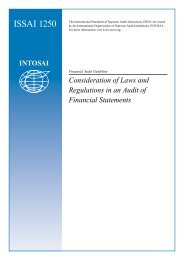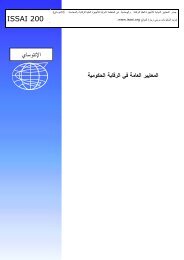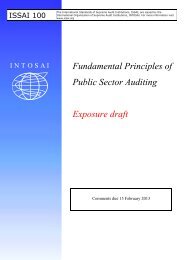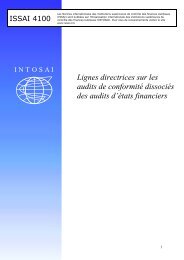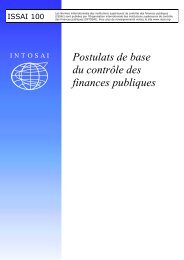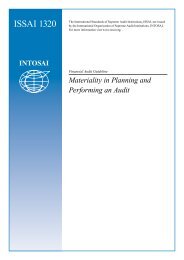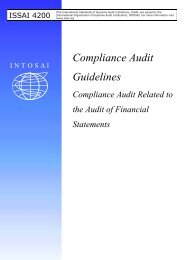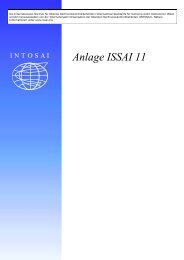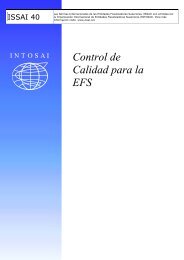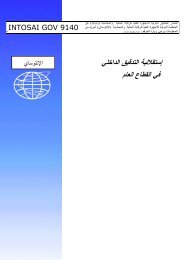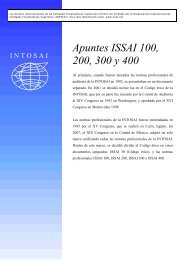ISSAI 1240
ISSAI 1240
ISSAI 1240
Create successful ePaper yourself
Turn your PDF publications into a flip-book with our unique Google optimized e-Paper software.
<strong>ISSAI</strong> <strong>1240</strong><br />
ISA 240<br />
THE AUDITOR’S RESPONSIBILITIES RELATING TO<br />
FRAUD IN AN AUDIT OF FINANCIAL STATEMENTS<br />
Evaluation of Fraud Risk Factors (Ref: Para. 24)<br />
A23. The fact that fraud is usually concealed can make it very difficult to detect.<br />
Nevertheless, the auditor may identify events or conditions that indicate an<br />
incentive or pressure to commit fraud or provide an opportunity to commit<br />
fraud (fraud risk factors). For example:<br />
• The need to meet expectations of third parties to obtain additional<br />
equity financing may create pressure to commit fraud;<br />
• The granting of significant bonuses if unrealistic profit targets are met<br />
may create an incentive to commit fraud; and<br />
• A control environment that is not effective may create an opportunity to<br />
commit fraud.<br />
A24. Fraud risk factors cannot easily be ranked in order of importance. The<br />
significance of fraud risk factors varies widely. Some of these factors will be<br />
present in entities where the specific conditions do not present risks of material<br />
misstatement. Accordingly, the determination of whether a fraud risk factor is<br />
present and whether it is to be considered in assessing the risks of material<br />
misstatement of the financial statements due to fraud requires the exercise of<br />
professional judgment.<br />
A25. Examples of fraud risk factors related to fraudulent financial reporting and<br />
misappropriation of assets are presented in Appendix 1. These illustrative risk<br />
factors are classified based on the three conditions that are generally present<br />
when fraud exists:<br />
• An incentive or pressure to commit fraud;<br />
• A perceived opportunity to commit fraud; and<br />
• An ability to rationalize the fraudulent action.<br />
Risk factors reflective of an attitude that permits rationalization of the<br />
fraudulent action may not be susceptible to observation by the auditor.<br />
Nevertheless, the auditor may become aware of the existence of such<br />
information. Although the fraud risk factors described in Appendix 1 cover a<br />
broad range of situations that may be faced by auditors, they are only examples<br />
and other risk factors may exist.<br />
A26. The size, complexity, and ownership characteristics of the entity have a<br />
significant influence on the consideration of relevant fraud risk factors. For<br />
example, in the case of a large entity, there may be factors that generally<br />
constrain improper conduct by management, such as:<br />
• Effective oversight by those charged with governance.<br />
• An effective internal audit function.<br />
• The existence and enforcement of a written code of conduct.<br />
21<br />
256 The Auditor’s Responsibilities Relating to Fraud in an Audit of Financial Statements



